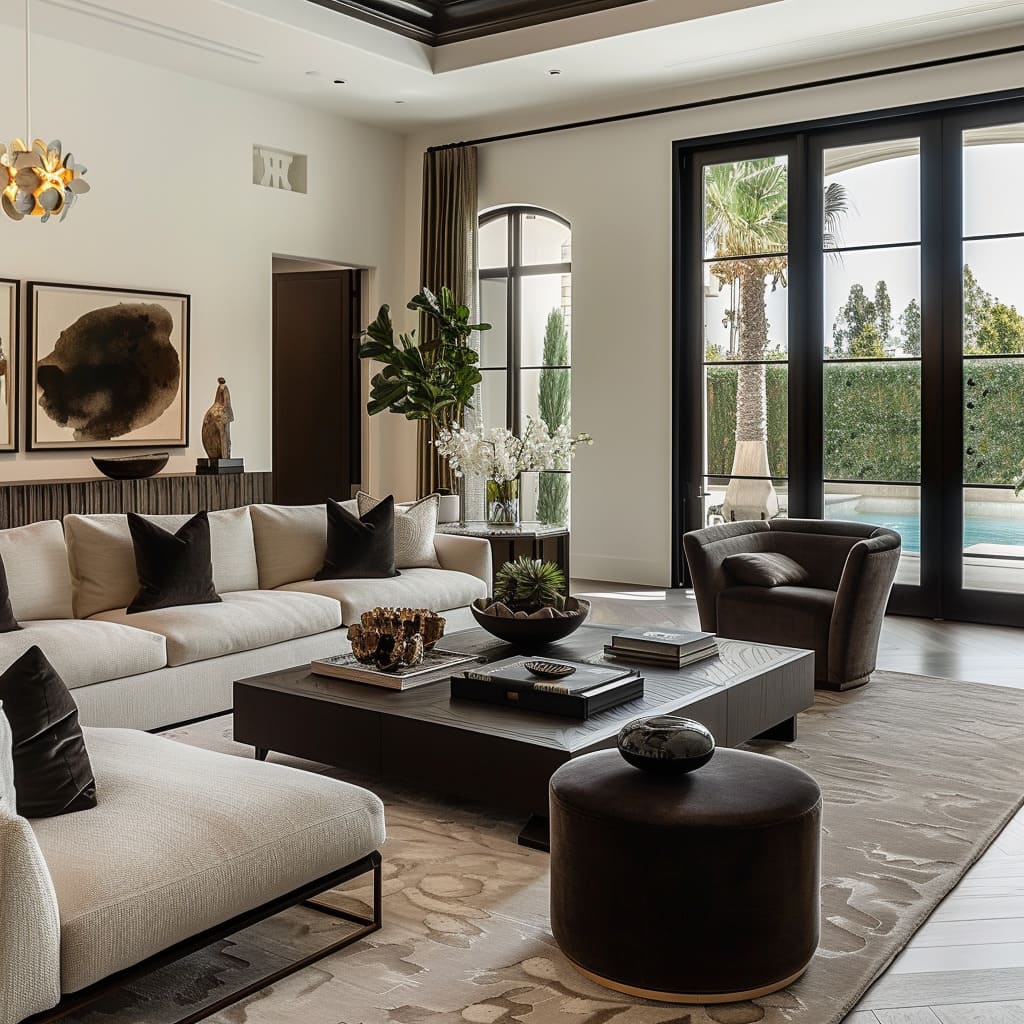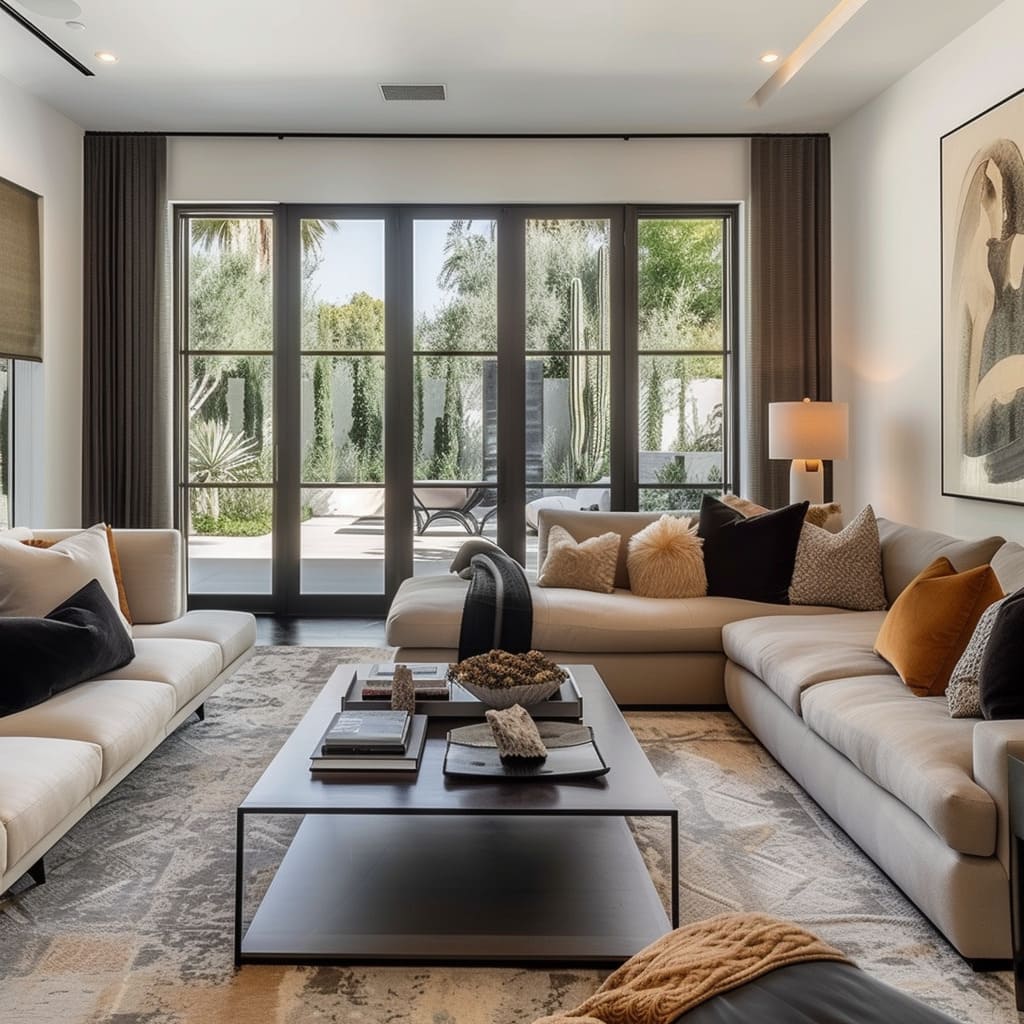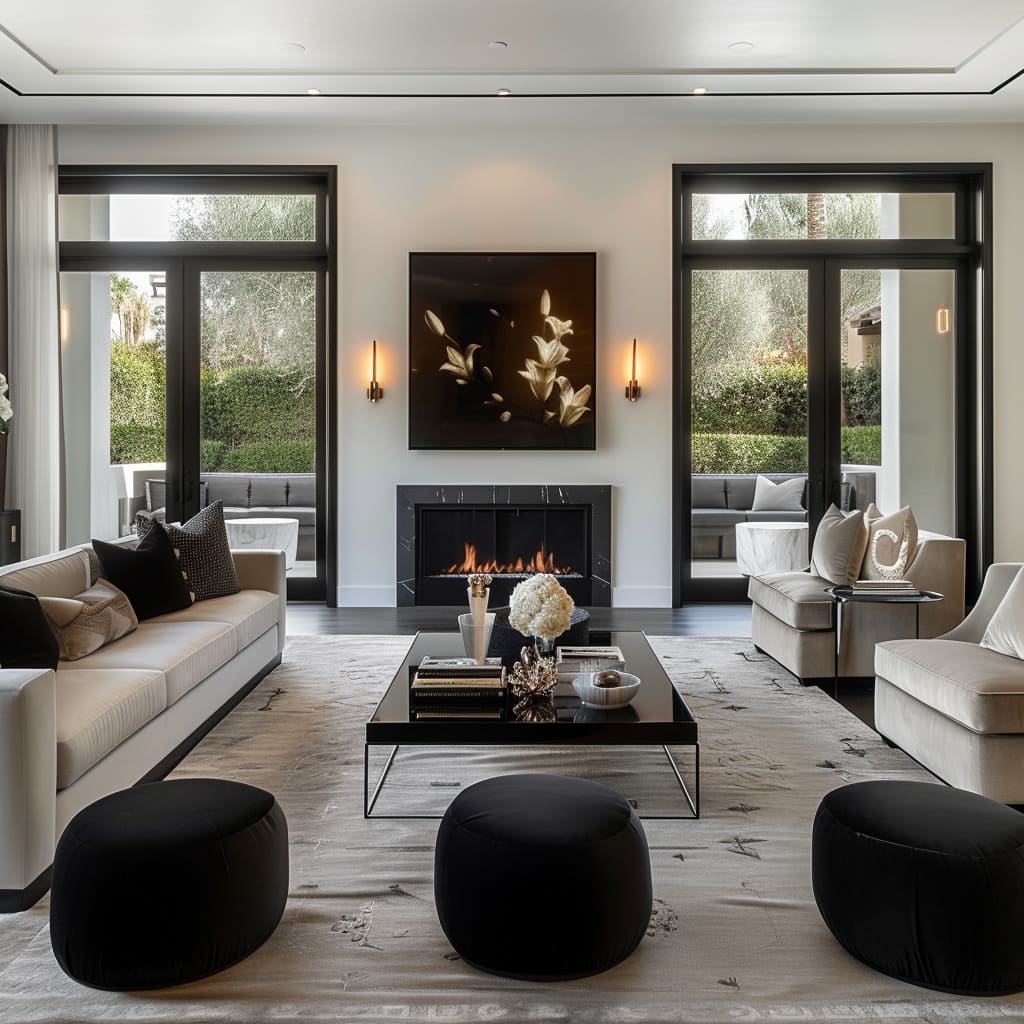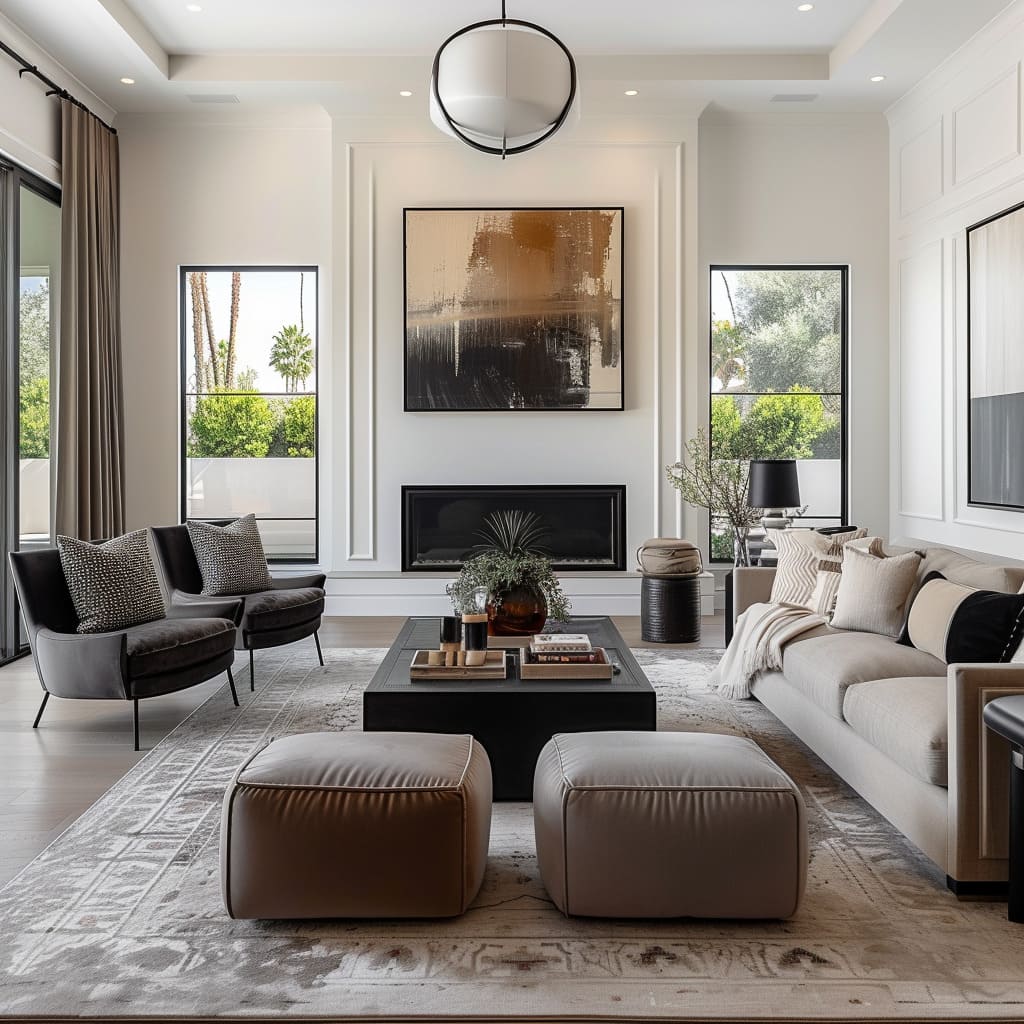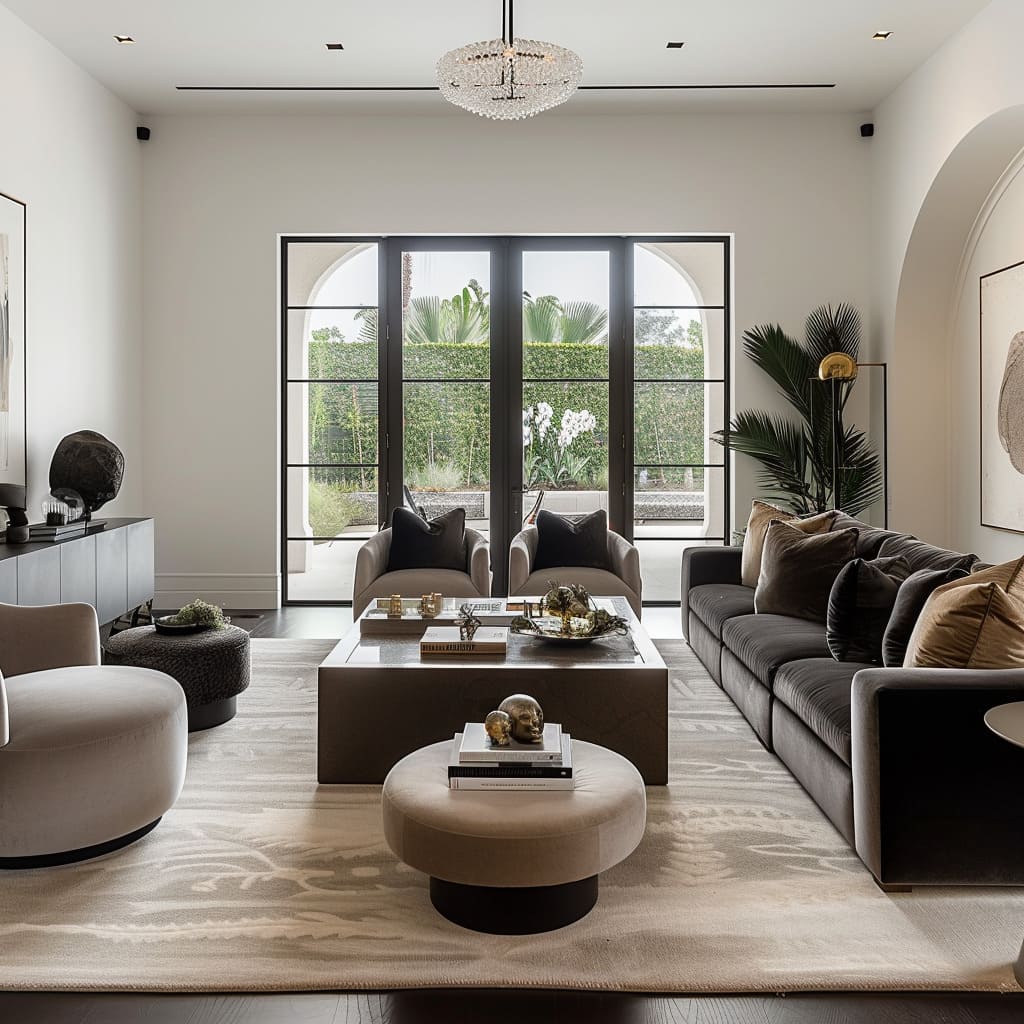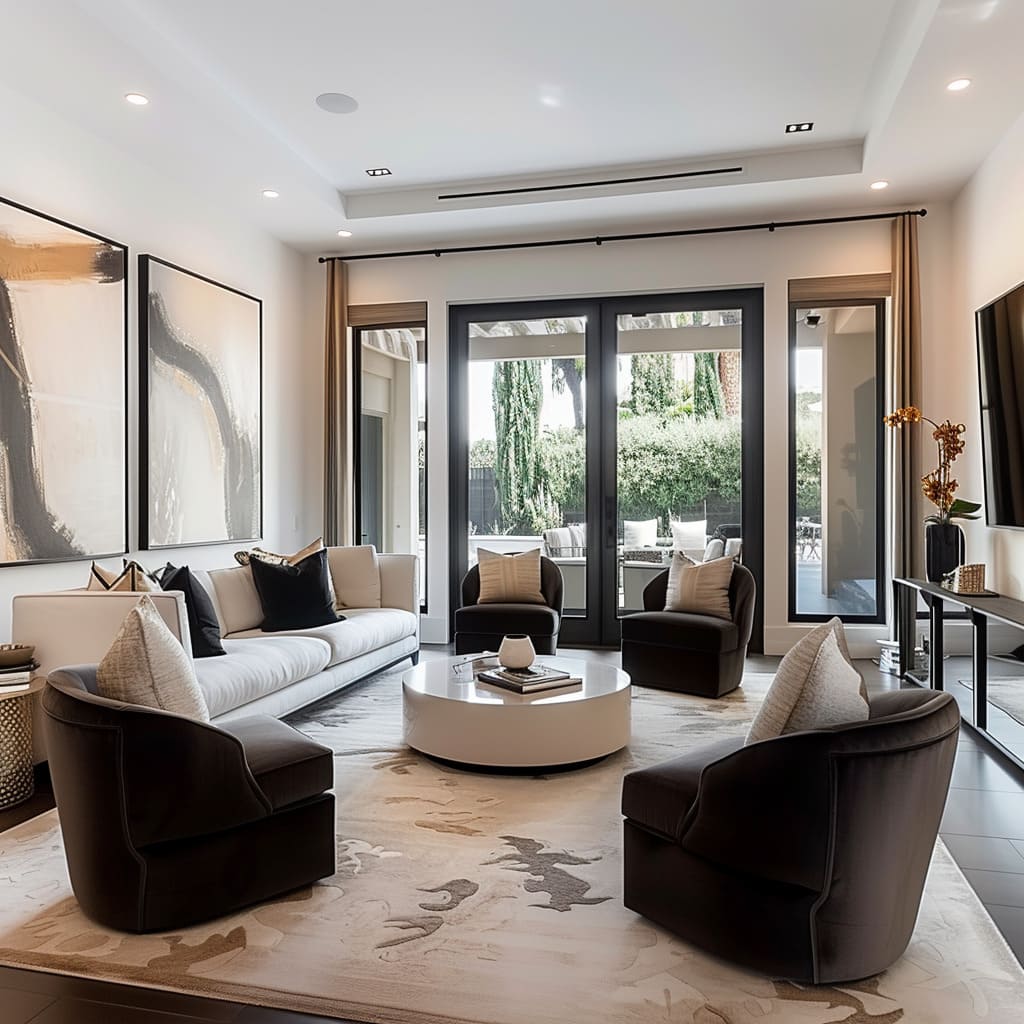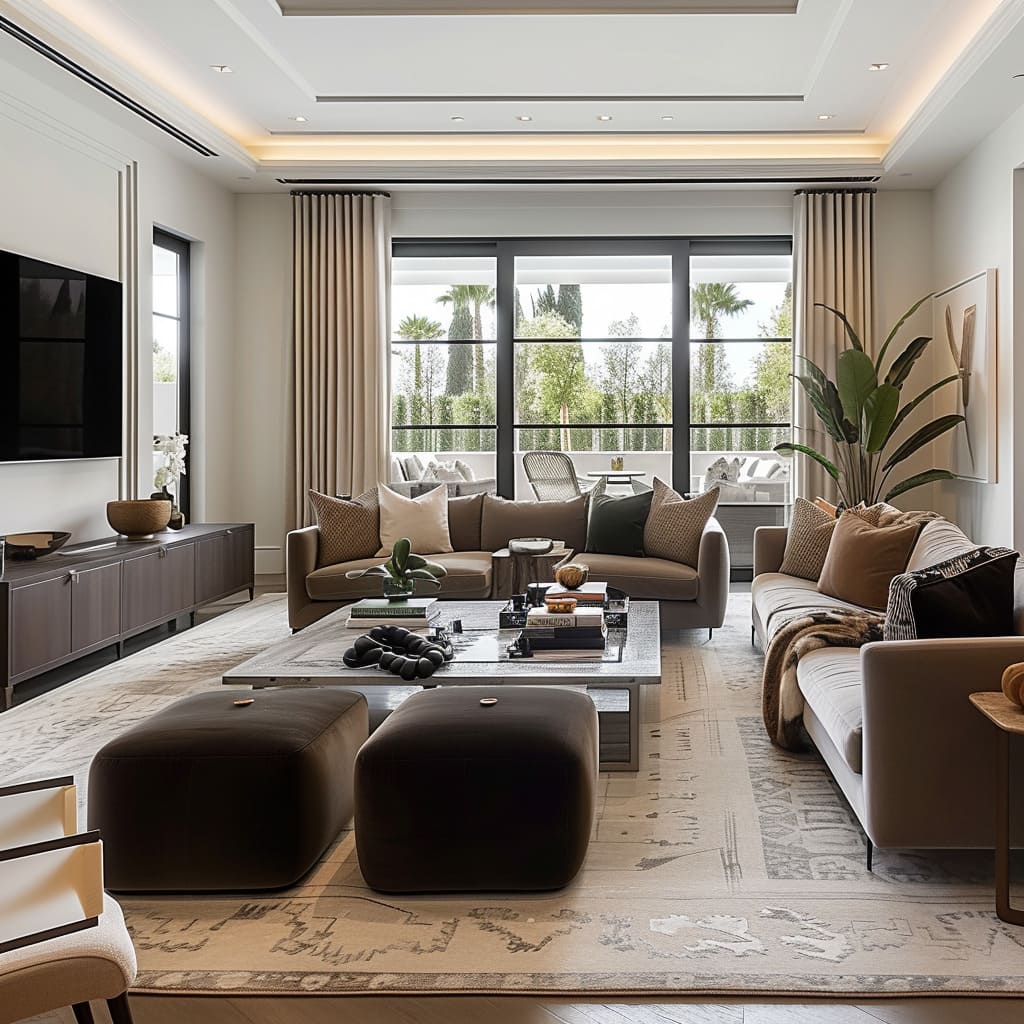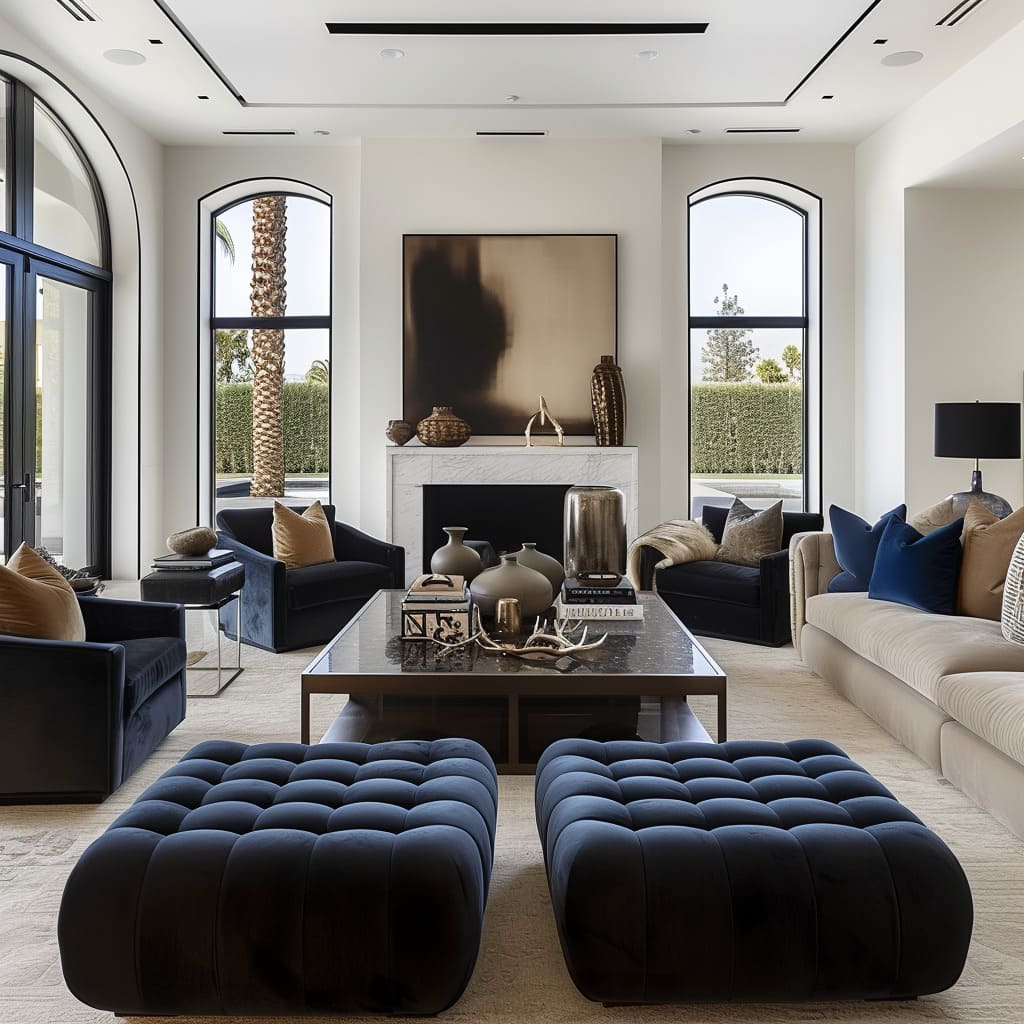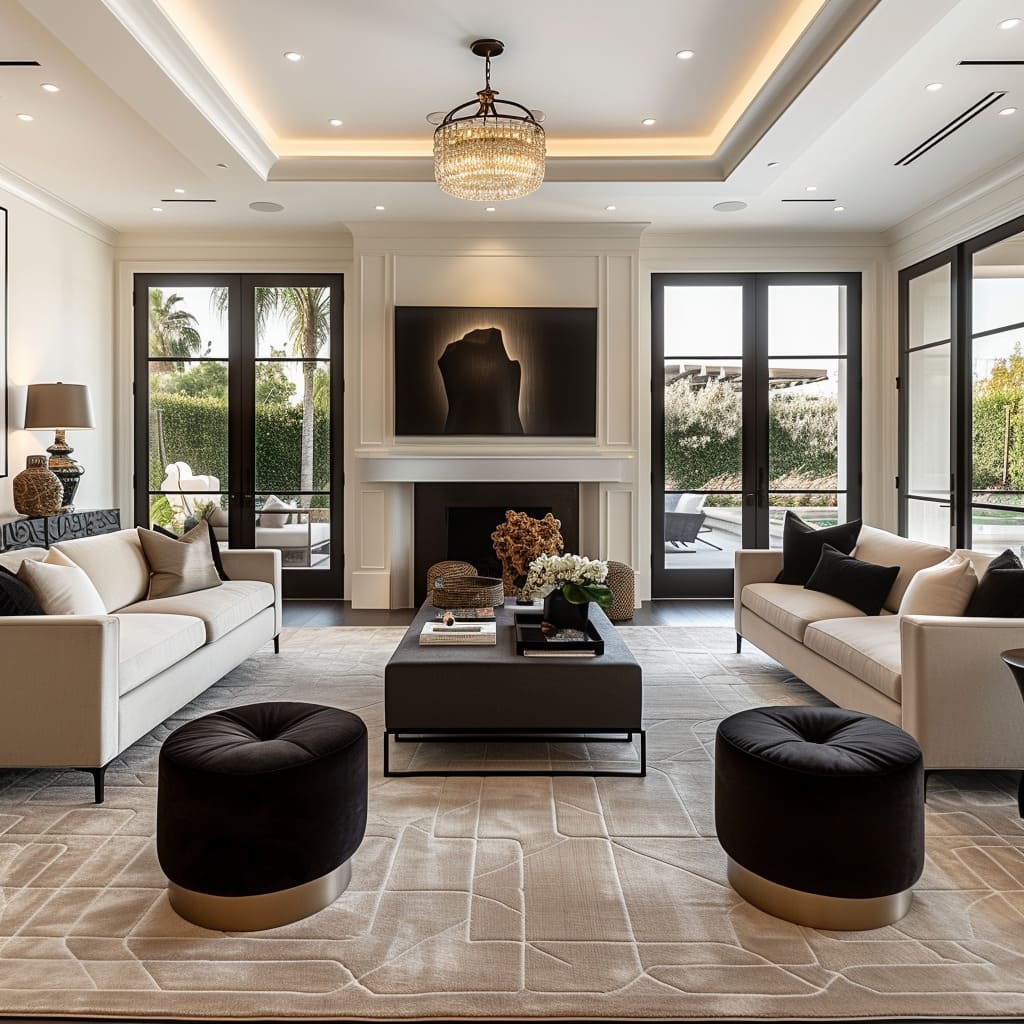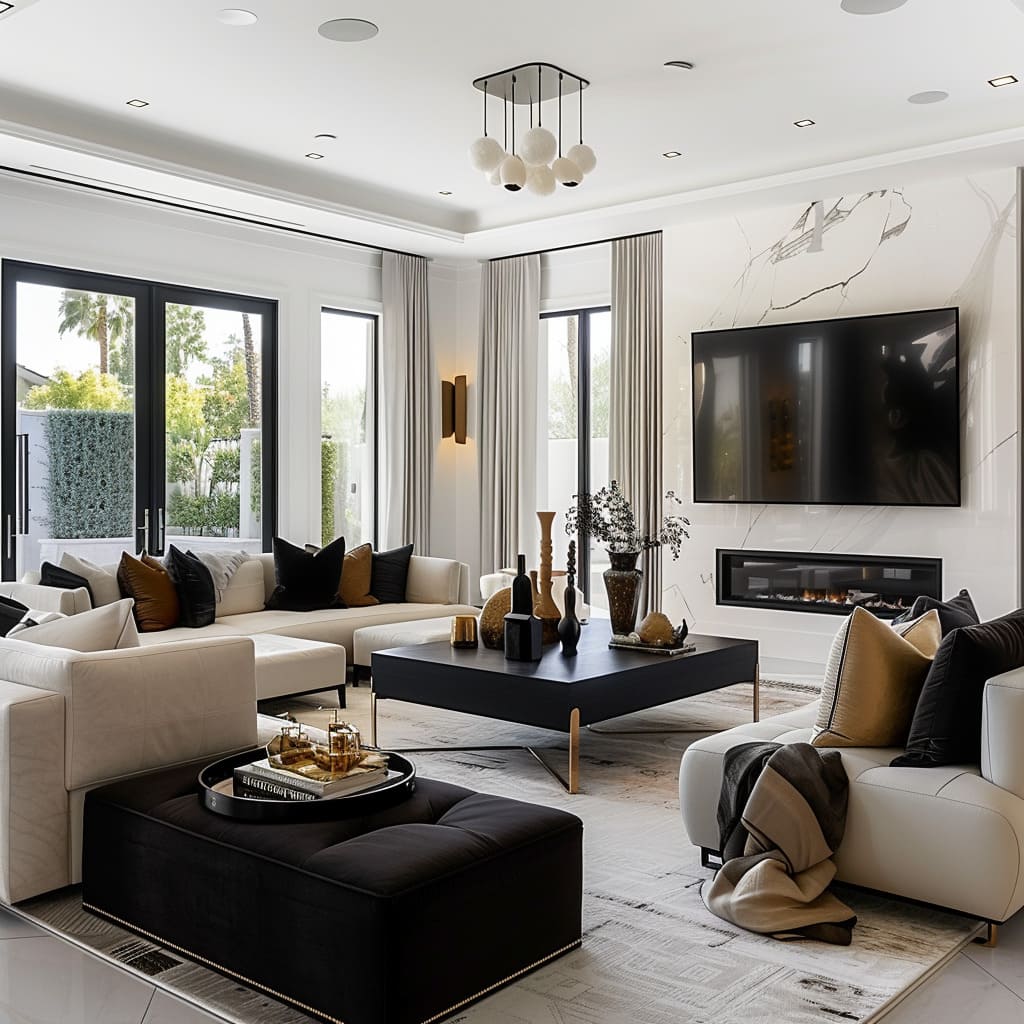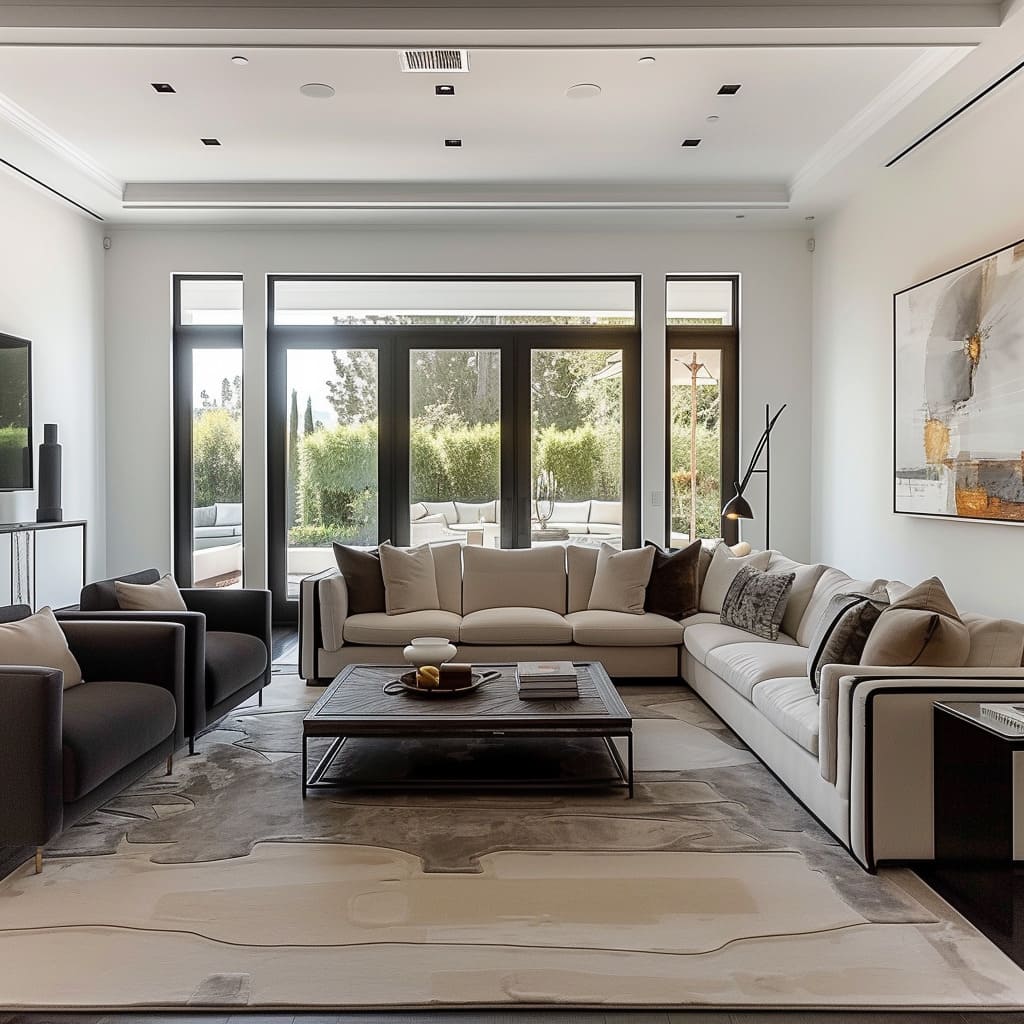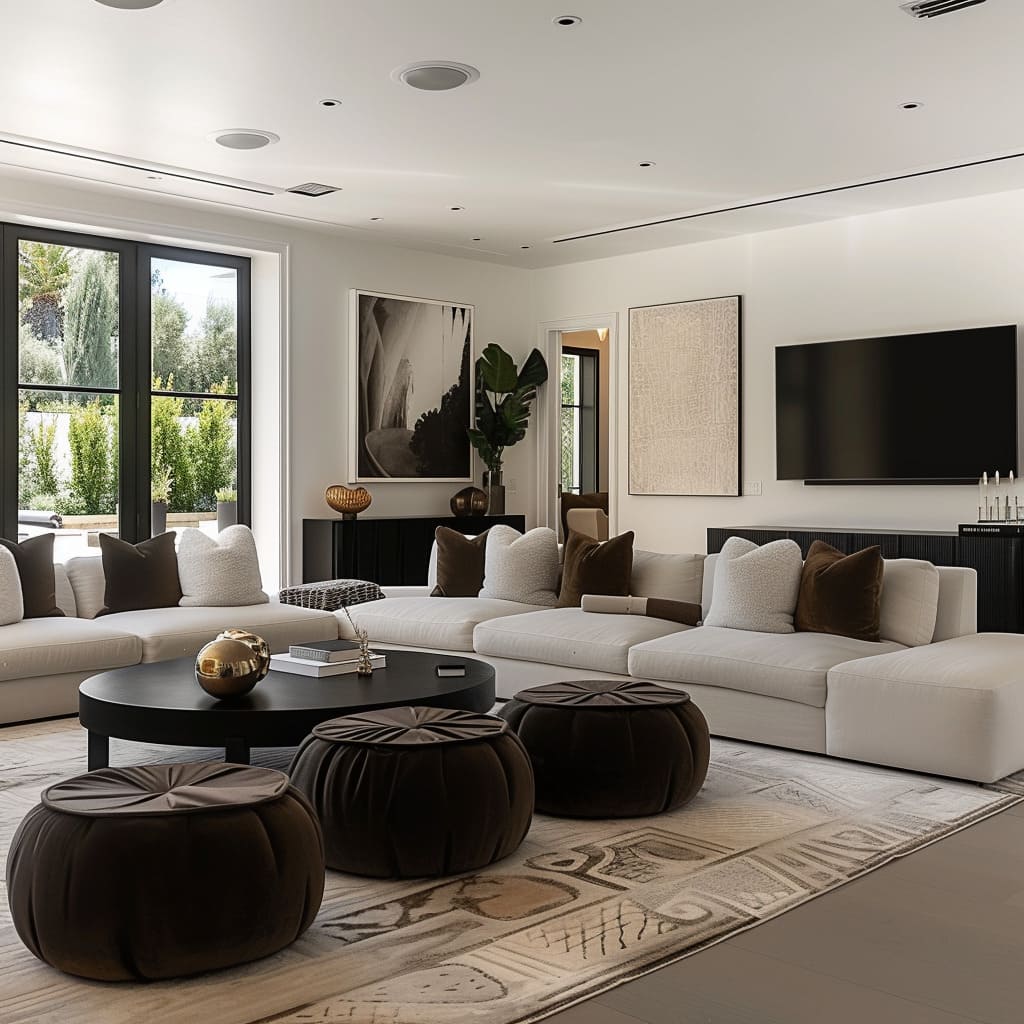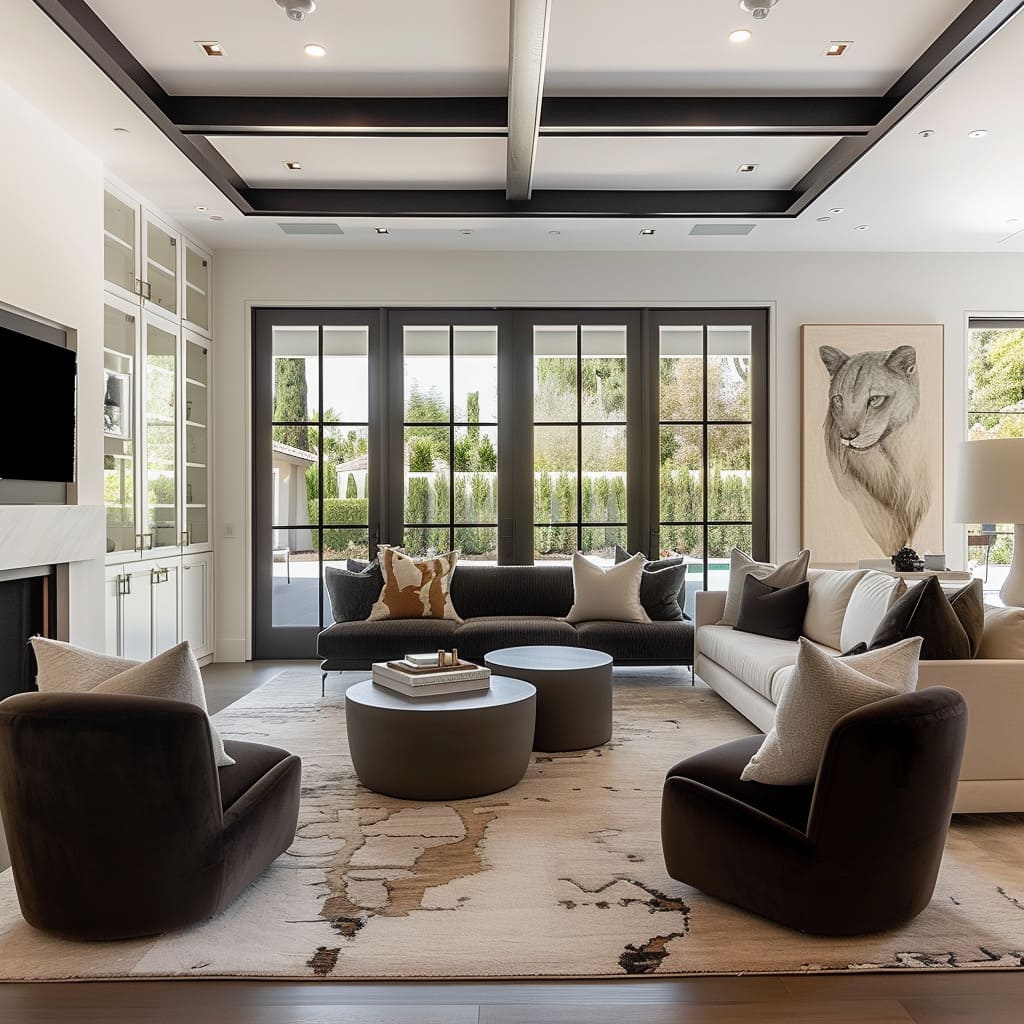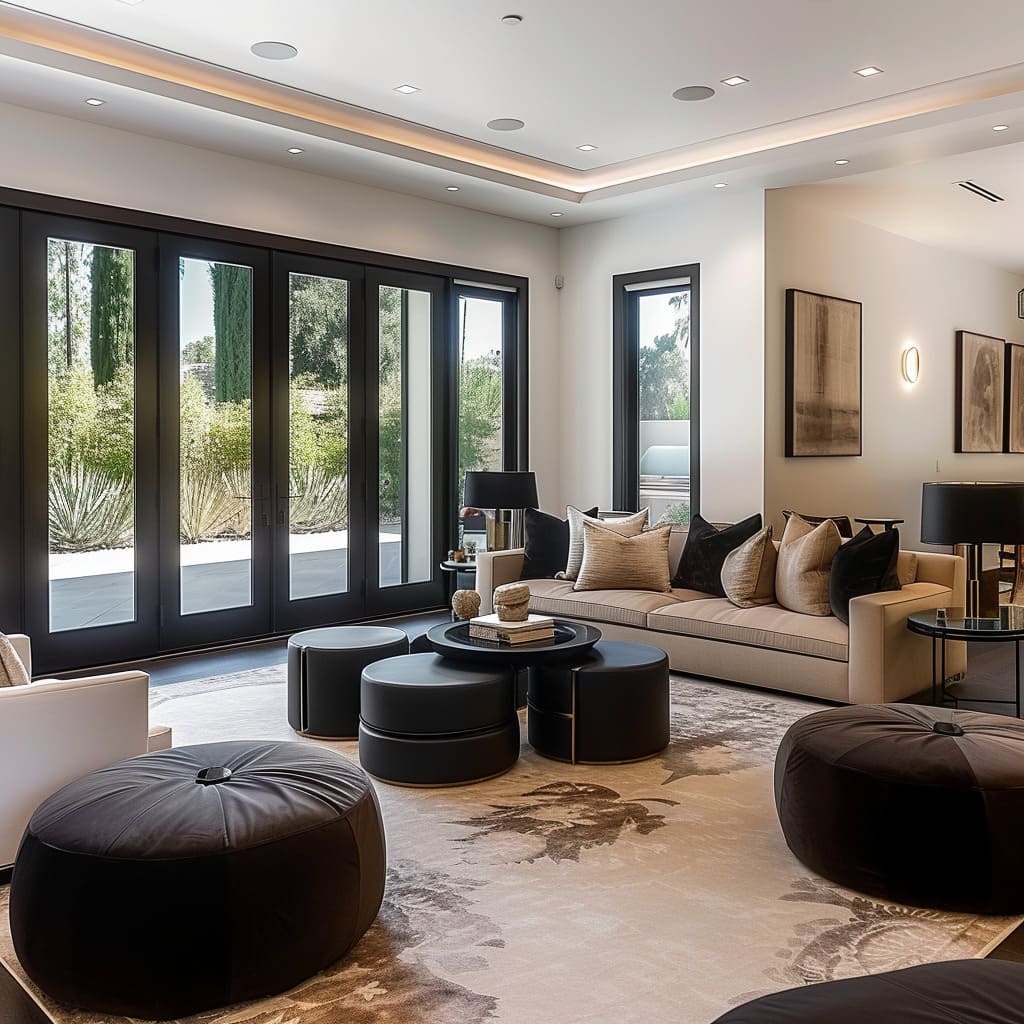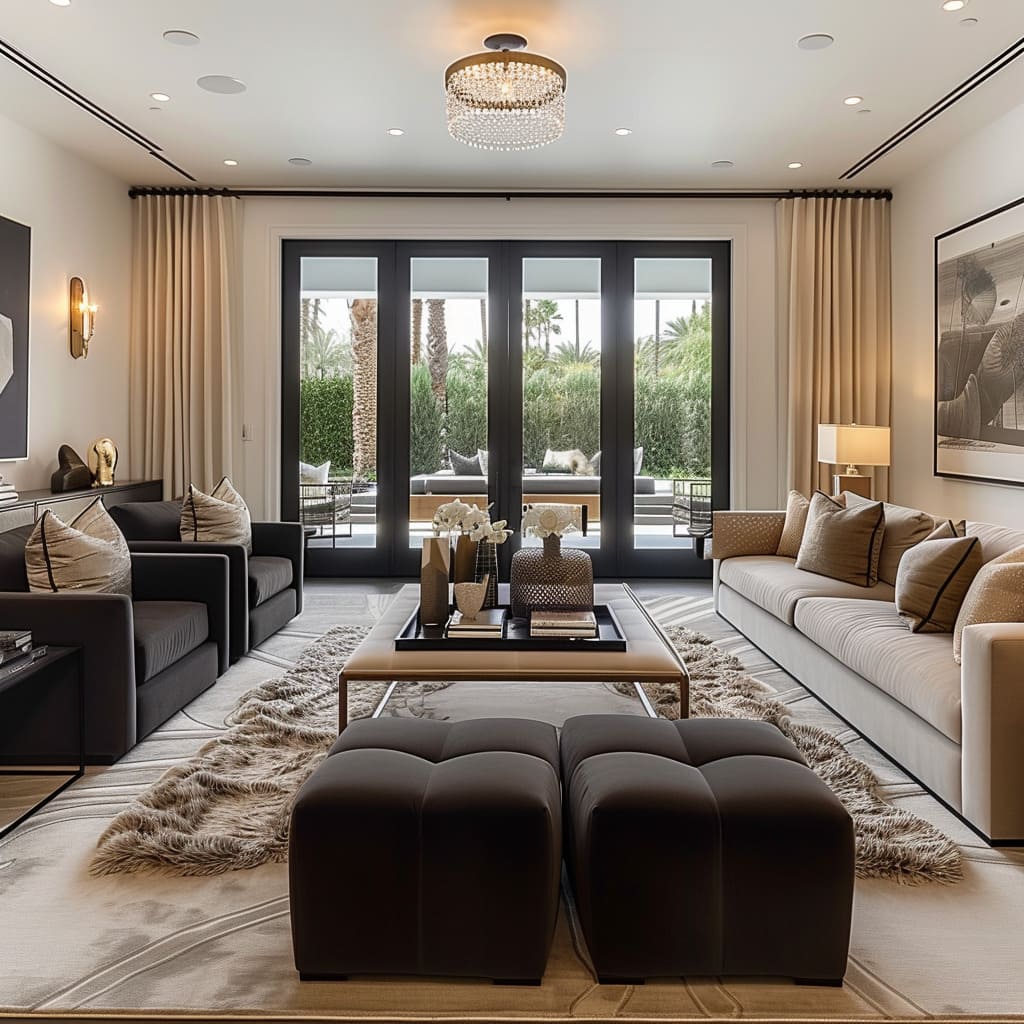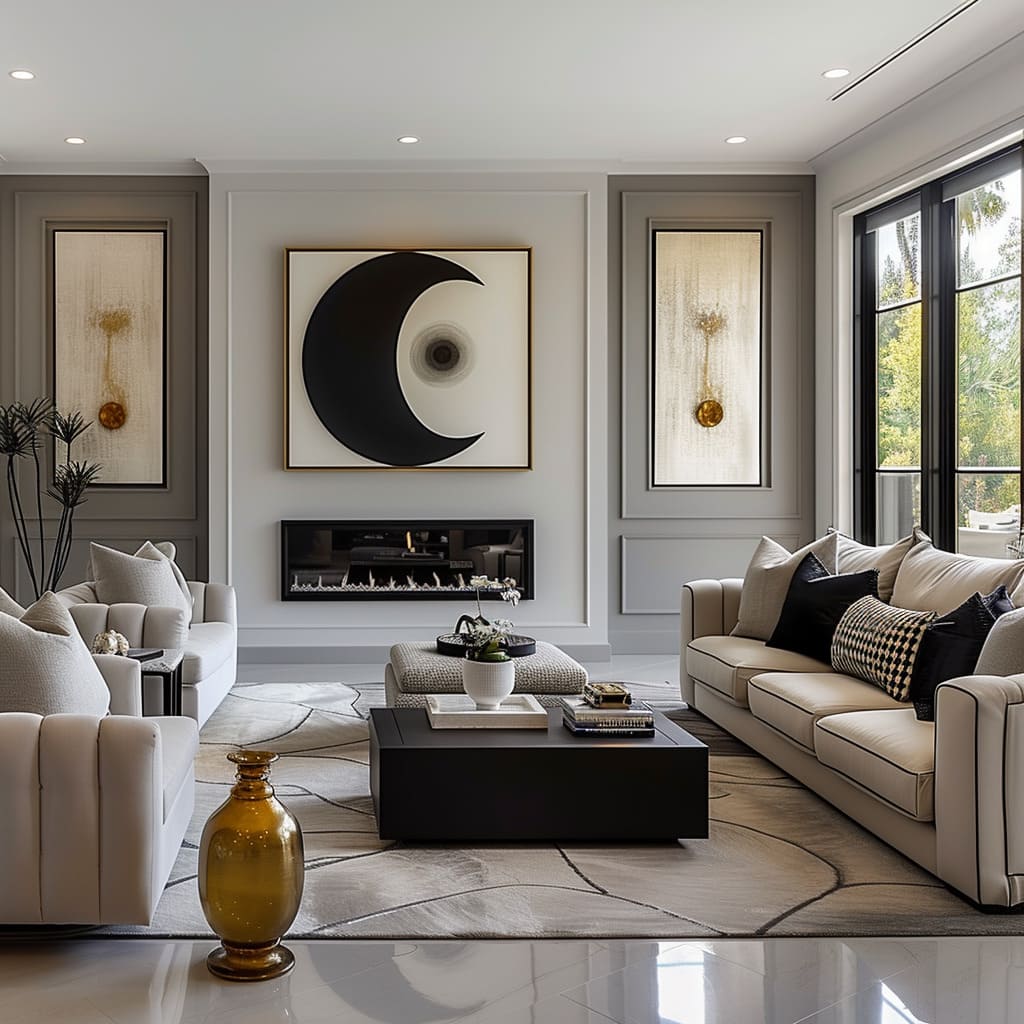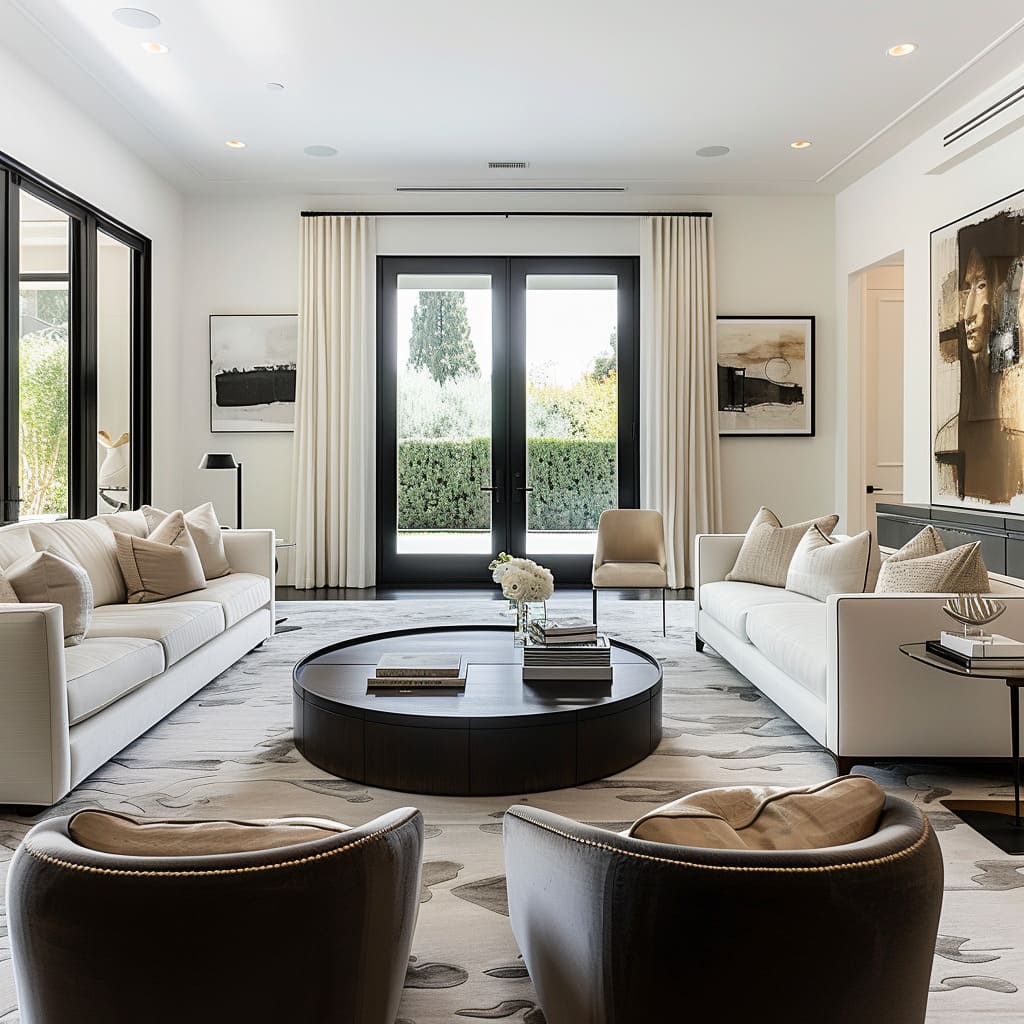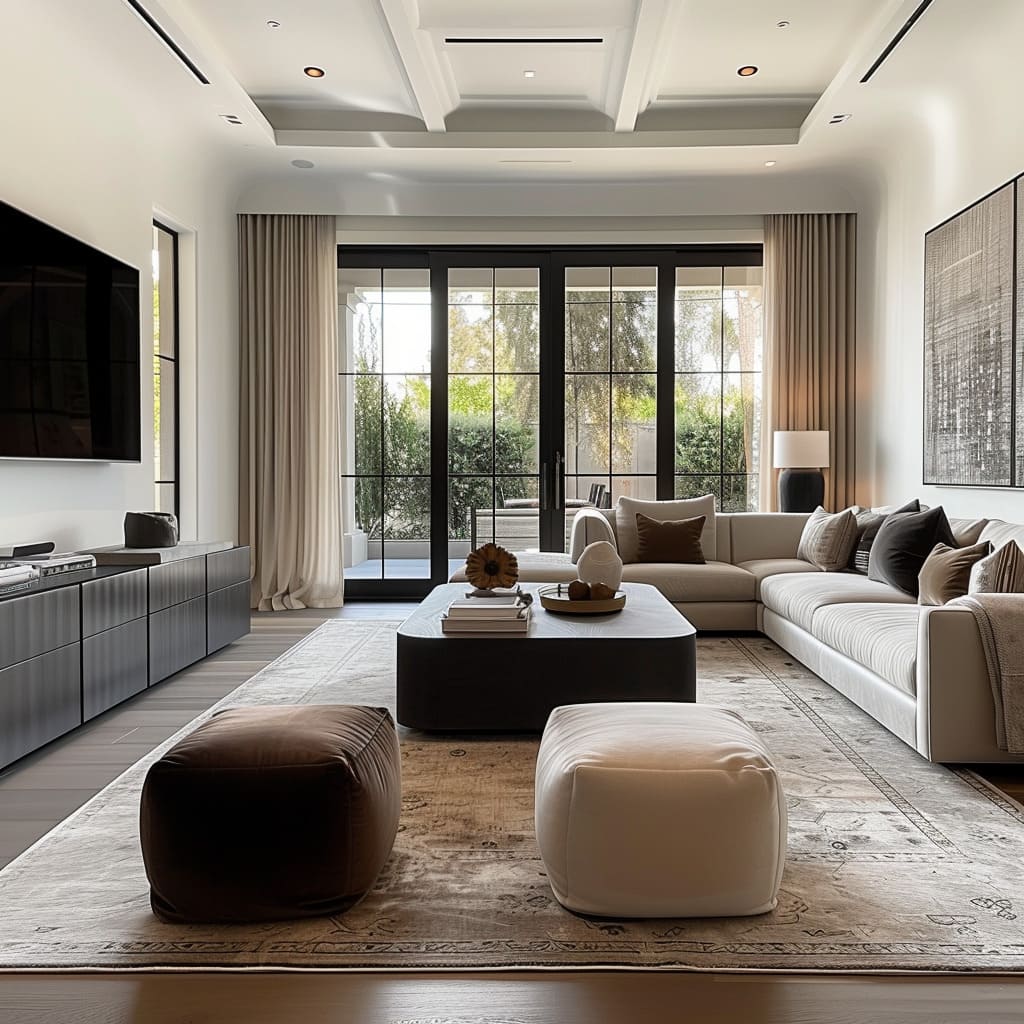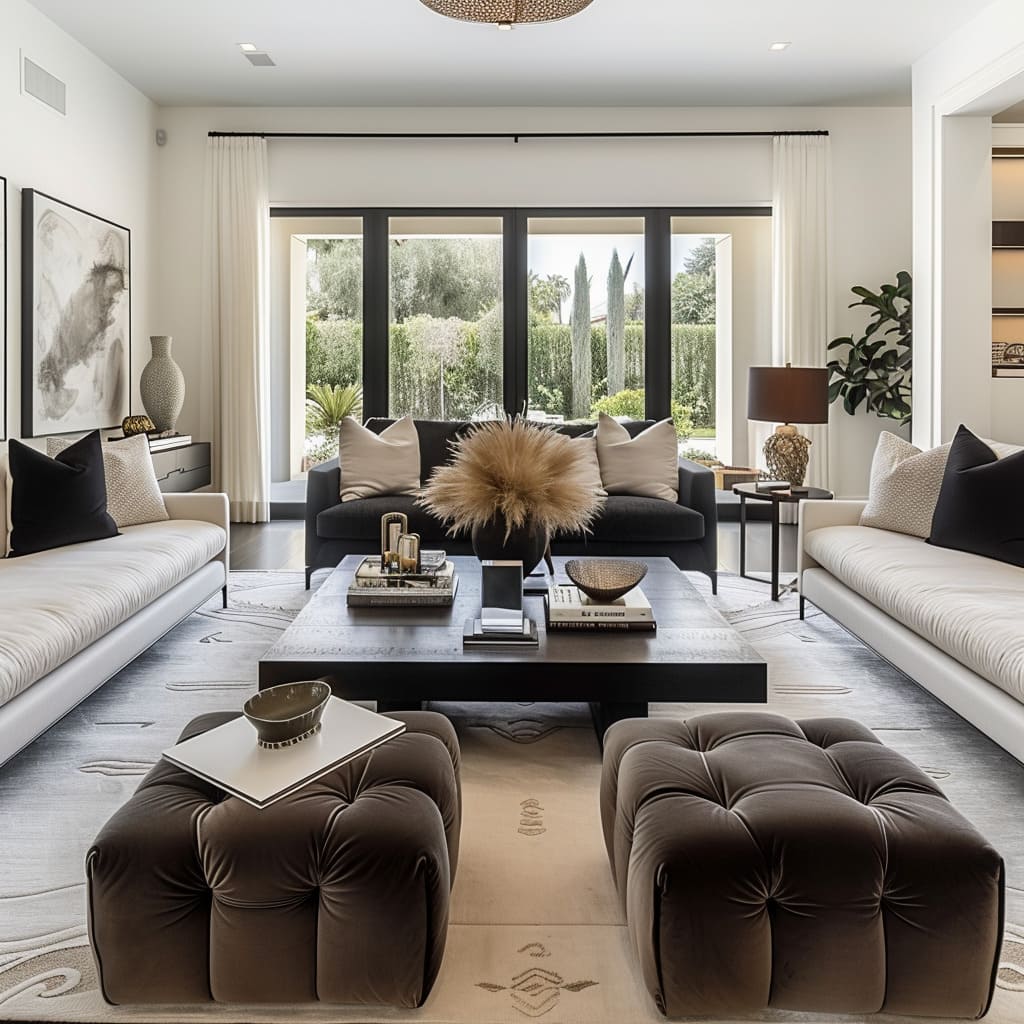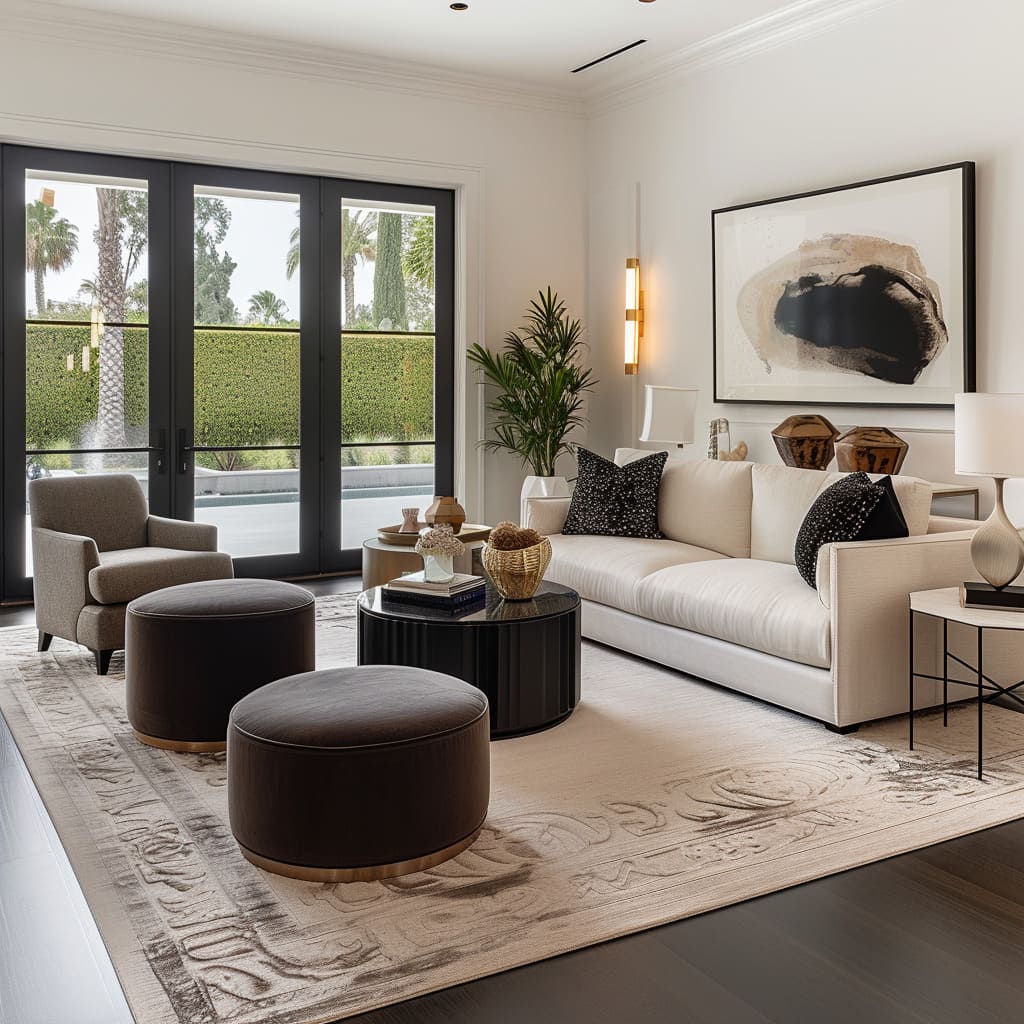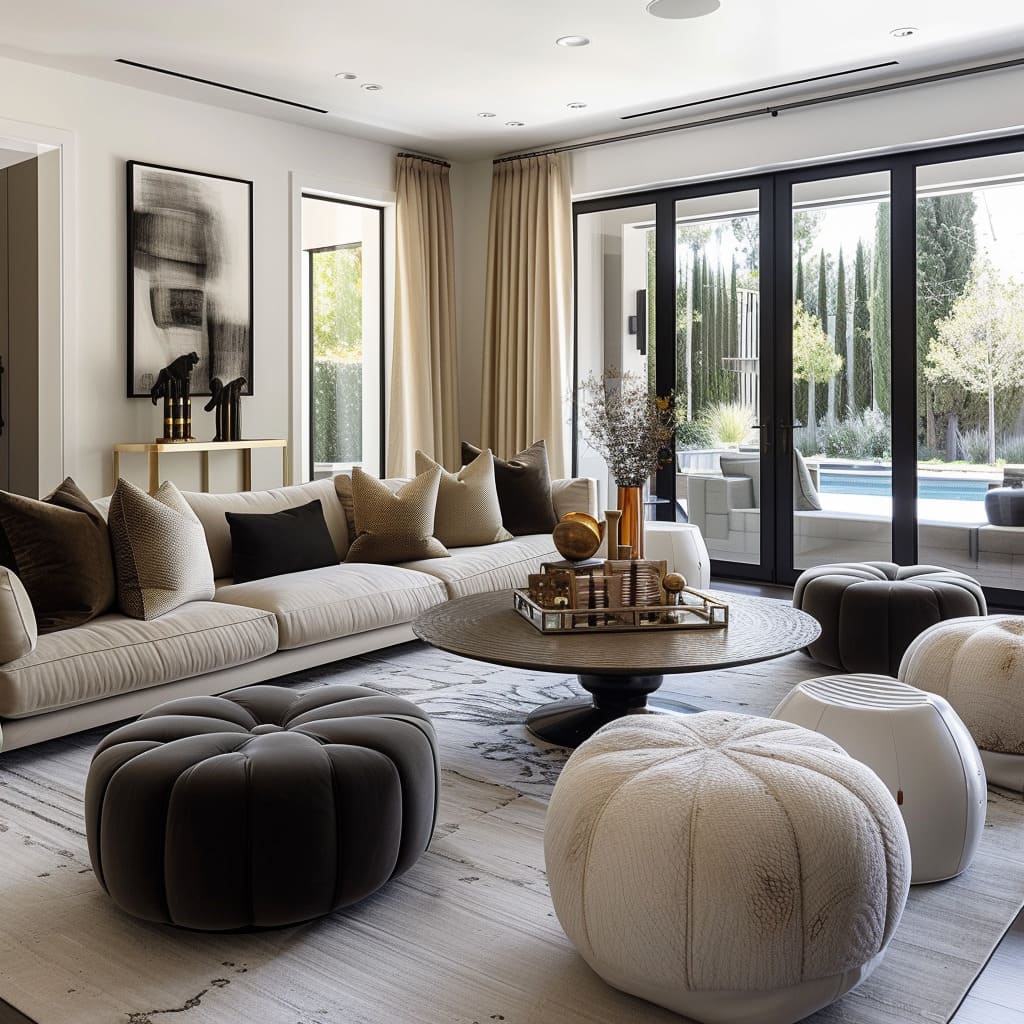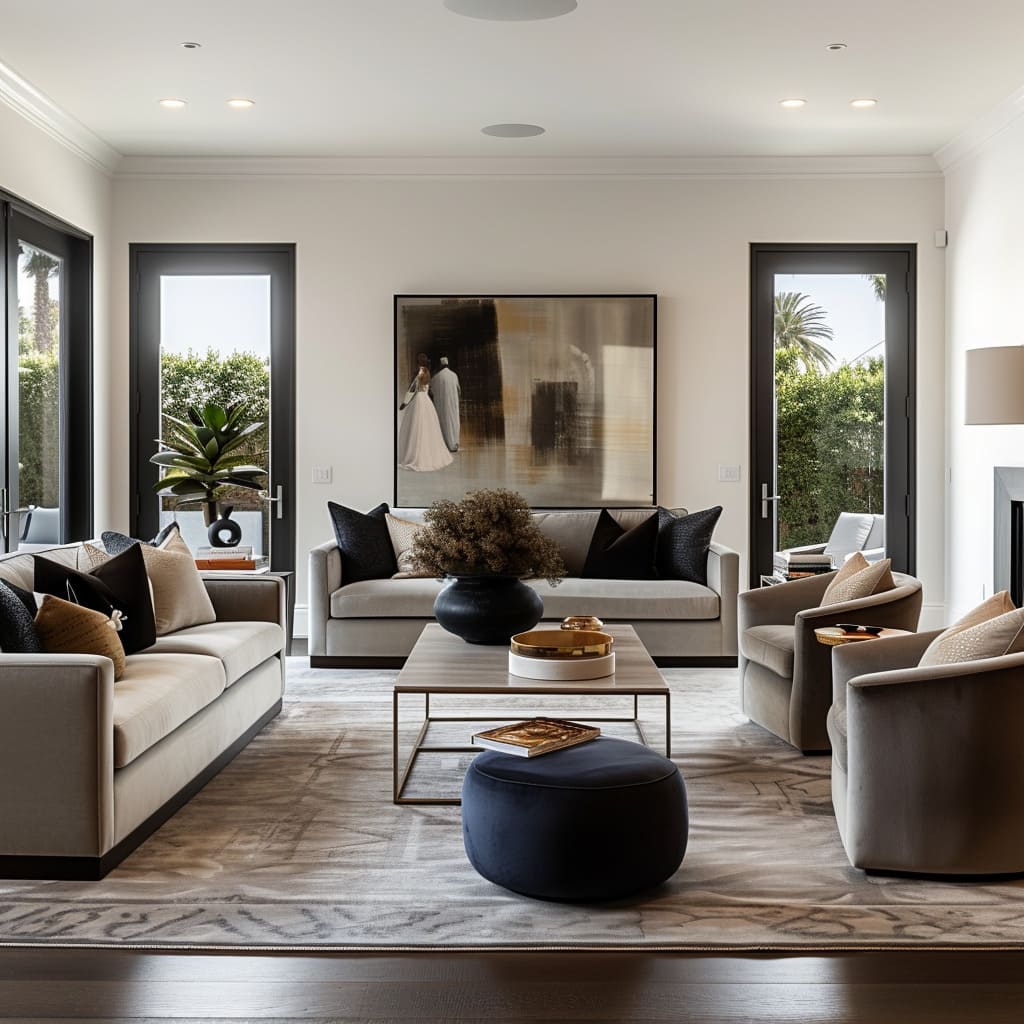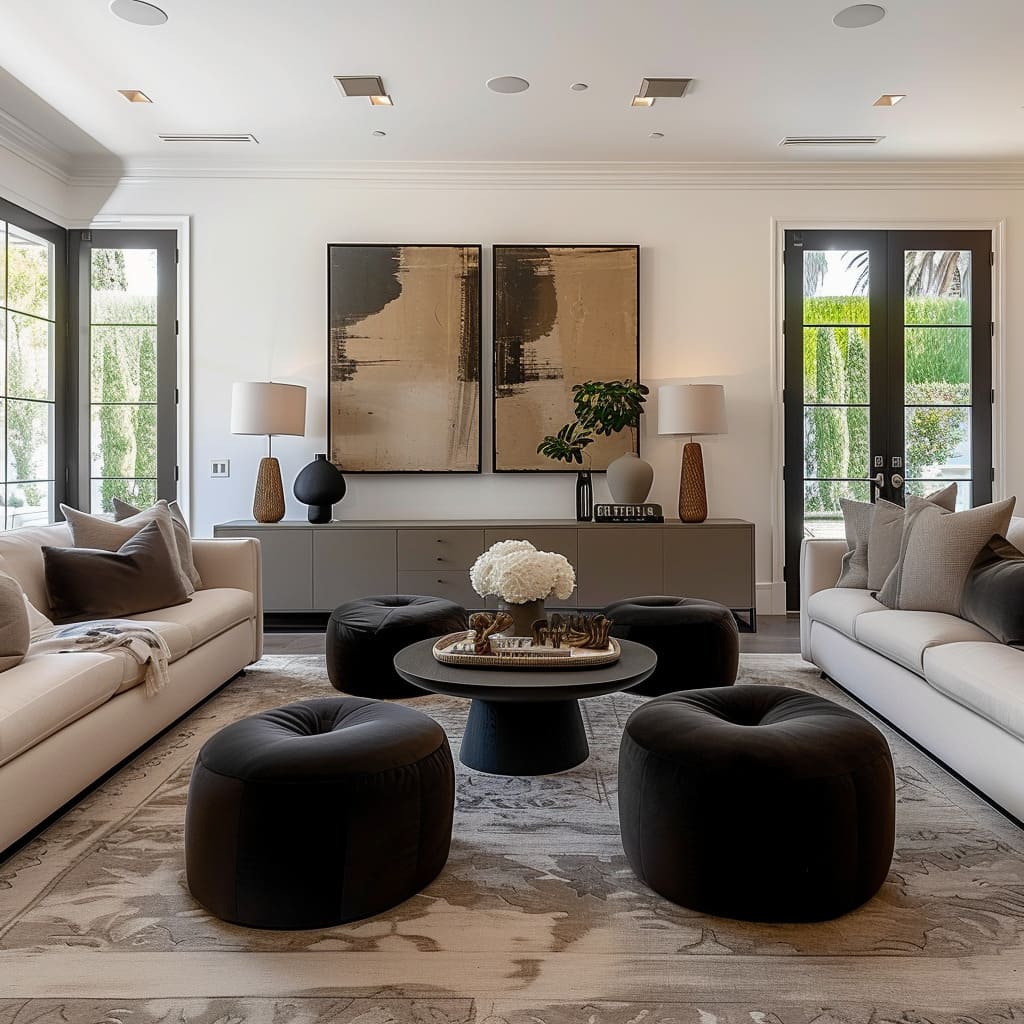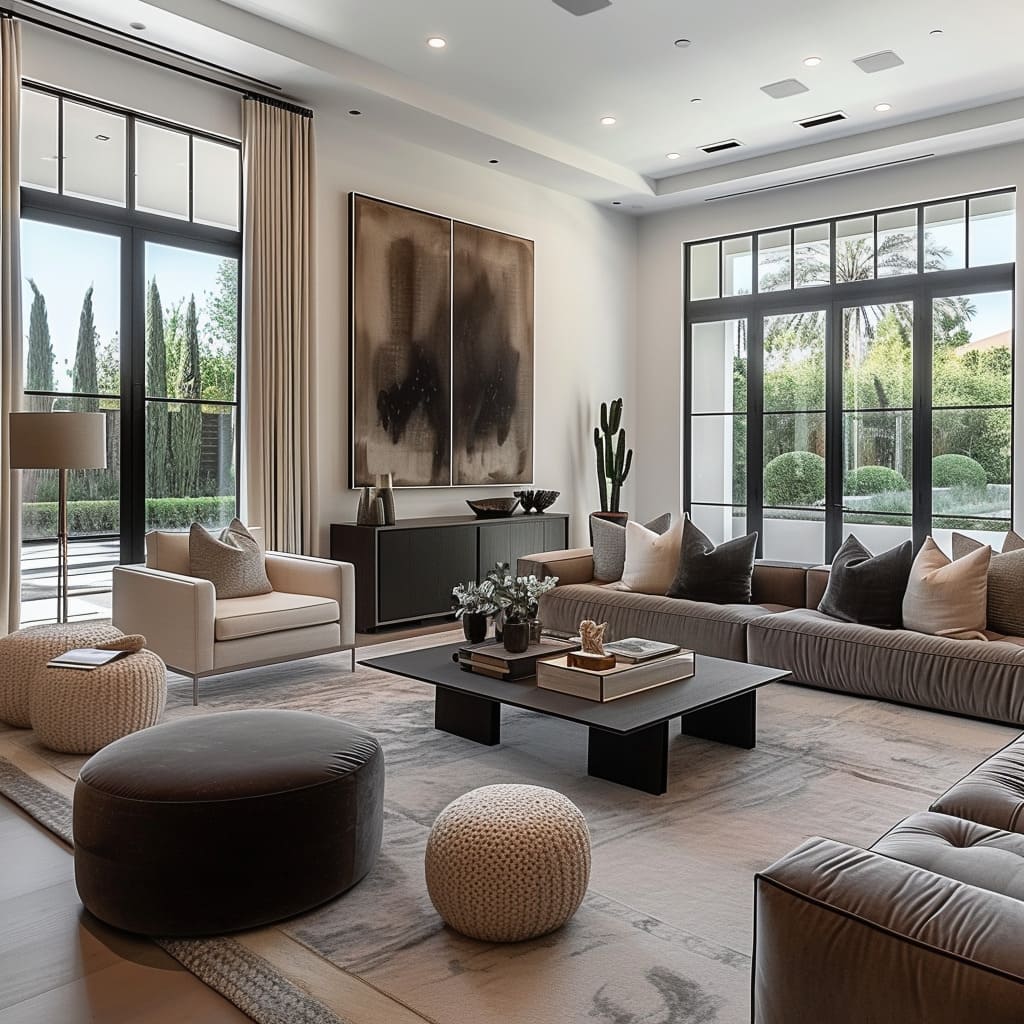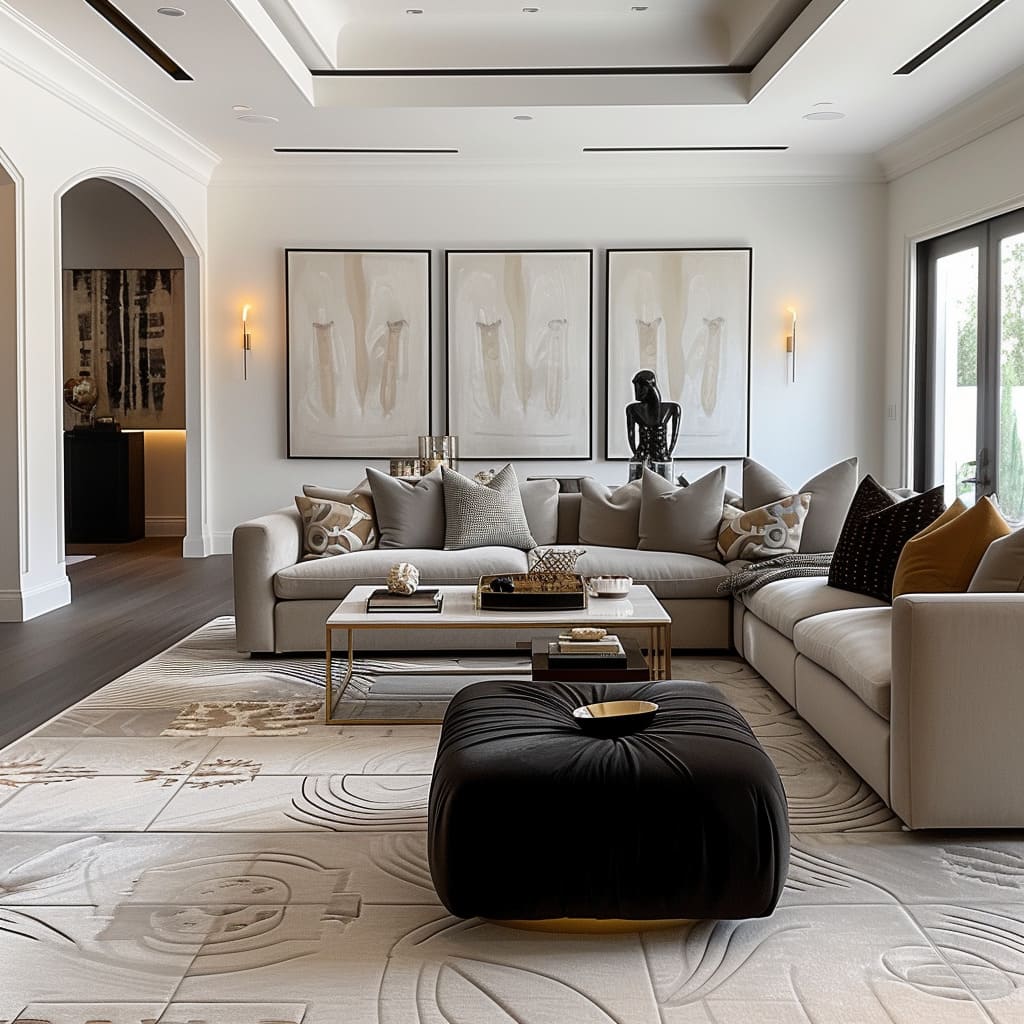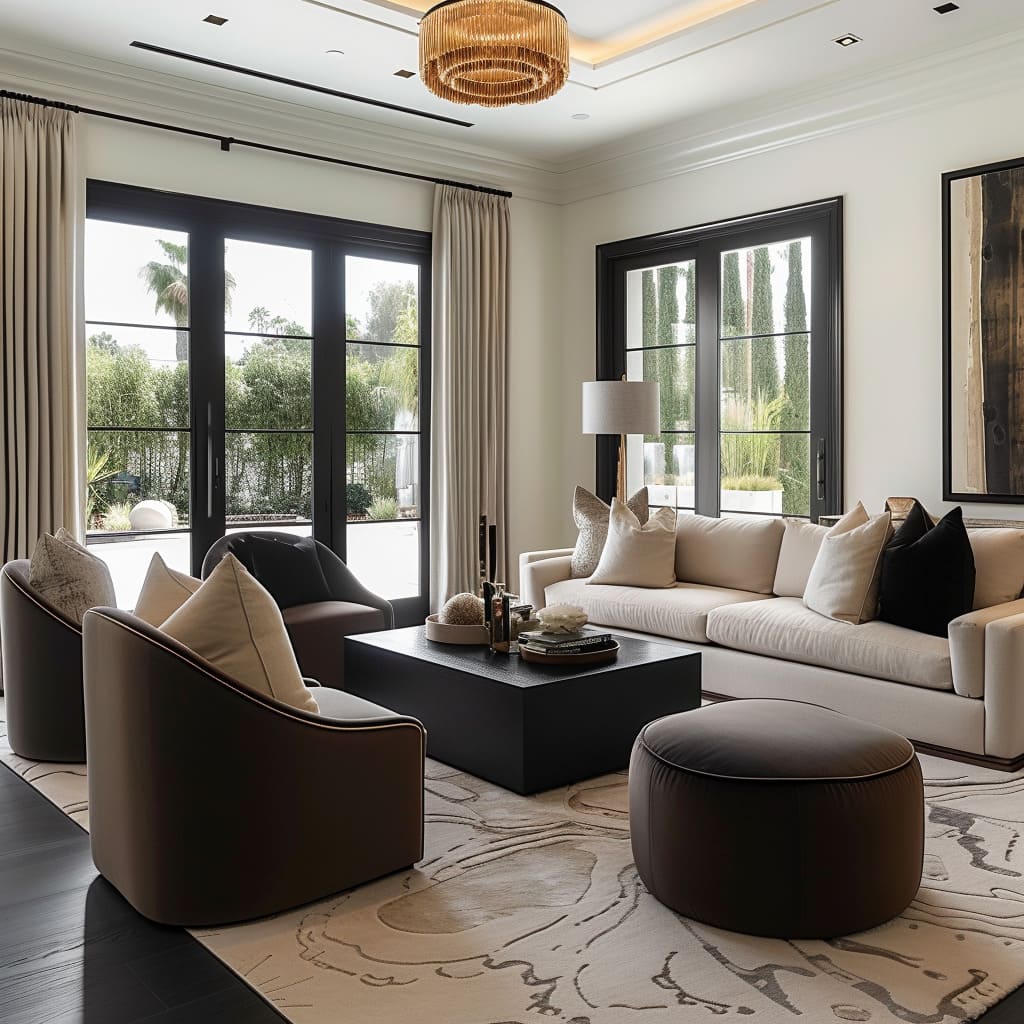The transitional style has emerged as a cherished bridge between the ornate charm of traditional decor and the sharp clarity of modern aesthetics. The article delves into the heart of this design philosophy, revealing how it weaves a narrative of balance, subtlety, and tactile richness.
In these interiors, the magic lies in the details—the soft whisper of linen drapes, the robust warmth of a well-crafted leather armchair, and the reflective sheen of polished metal accents. These elements converge in a symphony of textures that speak to both the eye and the touch, crafting an atmosphere of understated luxury and timeless appeal.
As we step into these spaces, we encounter a thoughtfully curated world where every object, surface, and piece of furniture plays a pivotal role in constructing an immersive experience. The neutral tones that dominate the palette do not merely serve as a visual rest but act as a canvas, allowing textures to tell their rich and varied stories.
From the grain of the wood in a sleek side table to the plush embrace of velvet throw pillows, these rooms are a testament to the nuanced complexities that textures bring to an interior space.
In this thorough exploration, we will unravel the layers of tactile engagement that define the transitional style. We will examine how the interplay of smooth and coarse, matte and glossy, plush and rigid, contribute to a design language that is both contemporary and timeless.
This is a style that honors the legacy of traditional motifs while embracing the clarity and simplicity of the modern ethos, resulting in spaces that are harmonious, fluid, and deeply resonant with our need for beauty and comfort.
As we journey through the various elements that contribute to the tactile elegance of transitional interiors, we are reminded that true luxury is multi-sensory. It’s not just about what we see; it’s about what we feel under our fingertips, the impressions that linger on our skin, and the sensations that invite us to engage with our surroundings.
These interiors are a testament to the delicate balance of texture and form, where every choice is an intentional stride towards creating spaces that are not only visually stunning but also inherently inviting and livable.
Harmonious Textures: Tactile Elegance in Transitional Interiors
The interiors portray a luxurious transitional interior style that masterfully blends classic design elements with contemporary aesthetics to create spaces that are both timeless and modern. The defining characteristic of this style is the harmonious interplay of textures which gives each room a layered and sophisticated look.
Let’s delve into the aspects of mixed textures within these interiors.
In each room, there’s a remarkable balance between sleek, modern materials and more traditional, tactile ones. The plush fabrics of the sofas and armchairs invite you to touch and feel, providing a sense of comfort and warmth.
These are juxtaposed with sleek leathers, seen in the round ottomans and accent chairs, contributing a smooth and cool touch that speaks to a more contemporary vibe.
The rugs add another layer of texture, with patterns that range from subtle to more pronounced, and they act as the perfect underfoot that complements rather than competes with the rest of the décor. The usage of linen, velvet, and silk in the throw pillows creates a visual and tactile feast that draws the eye and encourages physical engagement with the space.
The strategic placement of decorative objects further emphasizes this mix of textures. Items such as books, vases, and sculptures vary in materiality from glossy ceramics, reflective glass, to matte metals, each contributing to the overall sensory experience of the space.
The artwork is particularly notable for its textural elements, with some pieces featuring heavy brushstrokes that add a three-dimensional quality to the walls.
Lighting fixtures also play a key role in this textural symphony. From the smooth glass of table lamps to the intricately woven appearance of certain hanging light fixtures, light plays across these varied surfaces, highlighting their differences and adding depth to the rooms.
The overall color palette is neutral, which allows the textures to take center stage. The use of earthy tones, blacks, whites, and grays ensures that the spaces remain calm and cohesive, but these neutral tones are never flat or dull due to the abundant textures that infuse life into the space.
In the transitional style, the mix of textures isn’t just about visual appeal; it’s about creating a space that feels balanced and curated. It provides an experience that is dynamic yet unified, inviting yet polished.
The designers have achieved a sophisticated environment where every touch and glance reveals a careful consideration of both form and function, making these interiors not just places to live, but places to feel.
Cohesive Color Schemes
The interior designs embody a sophisticated, cohesive color scheme, a hallmark of the transitional style that bridges the gap between traditional warmth and contemporary simplicity. The consistent use of a neutral color palette is a strategic choice that brings numerous aesthetic and psychological benefits to the interior spaces.
In these rooms, the neutral palette sets the stage for an environment that feels both refined and approachable. It’s a backdrop that allows textures and silhouettes to take center stage without overwhelming the senses.
These subtle hues create a canvas for a variety of textures to play out, from the plush softness of the sofas to the sleek, smooth surfaces of tables and other accents.
The choice of neutrals ranging from light creams to deeper charcoals provides a visual continuity that flows from room to room, establishing a seamless transition that is soothing to the eye. This continuity can make the spaces feel larger and more open, as there are no jarring color transitions to compartmentalize the areas.
Within this framework, each room has its own identity, yet there’s an unmistakable thread that ties them together. The hues vary slightly in shade and tone, suggesting a careful curation rather than a monochromatic approach.
It’s a nuanced palette where the richness comes from the variety within the confines of a controlled color spectrum.
In addition to creating a unified look, the neutral color scheme also allows for flexibility in decor. It provides a foundation that can easily be built upon with different textures, patterns, and accent colors if desired.
It’s a practical choice for those who like to update their decor periodically, as the neutral base remains timeless.
The subtlety of the color palette also directs attention to the architectural elements and the furniture’s form. It highlights the clean lines, the elegant molding, the graceful arch of a chair’s arm, and the geometric form of a lamp.
In the absence of loud colors, one can truly appreciate the artistry in the design details.
Moreover, the use of neutrals encourages a sense of calm and tranquility. It is well documented that colors have a profound effect on our mood and emotions, and the chosen palette exudes a sense of peace and sophistication.
It’s conducive to relaxation and unwinding, making these living spaces not just visually appealing but also emotionally comforting.
In these interiors, the neutral color scheme is not just a design choice but a statement of lifestyle. It speaks to a preference for understated elegance, for spaces that are designed not to dazzle with color but to soothe with subtlety.
It’s a palette that respects the balance of aesthetics, form, and function, creating rooms that are as beautiful to look at as they are comfortable to live in.
In summary, the cohesive color schemes present in these transitional-style interiors are a testament to the power of restraint in color selection and the beauty of simplicity. The consistent use of a neutral palette across various rooms creates a harmonious and seamless visual experience, exuding timeless elegance while offering a versatile canvas for various textures and forms to express their beauty.
The Essence of Transitional Design and Living
As we draw the curtains on this exploration we arrive at a deeper understanding of what makes these spaces resonate with such grace and sophistication. The artistry displayed in these interiors is not merely in their visual appeal but in their ability to evoke a sensory dialogue with those who inhabit them.
In every fiber of plush fabric, in every smooth leather surface, and in each carefully selected decorative object lies a story—a narrative of textures that beckons a tactile and visual engagement.
These interiors remind us that design is more than just an arrangement of furniture or a palette of colors; it is the creation of an atmosphere that can transform the mundane into the extraordinary. The seamless blend of textures and the strategic use of a cohesive color scheme are not just design choices but are gestures that speak to the soul, offering an oasis of calm and a sanctuary from the chaos of the outside world.
In the curated balance between the old and the new, these transitional spaces champion the idea that elegance is timeless and that luxury is found in the details. The designers, with their meticulous attention to texture and color, have crafted environments that are as intellectually satisfying as they are emotionally comforting.
These are not merely rooms; they are living canvases where every brushstroke matters, and every hue speaks volumes.
Furthermore, the decision to embrace a neutral color palette underscores a commitment to creating a harmonious space that can adapt and evolve with time. This choice in color does not confine but liberates, providing a foundation that is as flexible as it is enduring, as it graciously accommodates shifts in trends and personal tastes.
As we step out of these interiors, we take with us the inspiration to seek beauty in the subtleties, to find harmony in contrasts, and to recognize that true sophistication lies in the ability to blend the tactile with the visual, creating spaces that are not only seen but felt. The transitional style, with its symphony of textures and its nuanced color schemes, offers more than just a lesson in design—it offers a blueprint for living well.
In conclusion, harmonious is more than an interior design concept; it is a philosophy that encapsulates the essence of transitional styling. It is an approach that respects the past, embraces the present, and is always ready for the future—a testament to the enduring power of design to elevate our living spaces and our lives.
Through the interplay of textures and the subtlety of a neutral palette, these interiors achieve a timeless elegance that will continue to inspire and influence the world of design for years to come.


